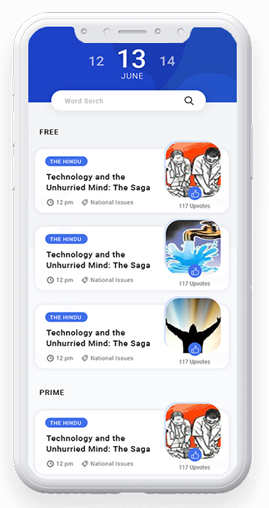Introduction
The smartphone stands as one of the most transformative inventions of the 21st century, revolutionizing communication, work, education, and entertainment. What began as a simple tool for calling and texting has evolved into a compact digital powerhouse that connects billions of people across the globe. Today, smartphones are not just gadgets—they are extensions of human capability, reshaping how societies function and individuals interact with the world.
________________________________________
The Evolution of Smartphones
The journey of smartphones began in the late 1990s and early 2000s when devices like the IBM Simon and Nokia Communicator introduced features such as email and basic touchscreens. However, the true revolution began in 2007 with the launch of the Apple iPhone, which combined communication, computing, and entertainment into one sleek device. Android followed soon after, bringing affordability and diversity to the market. Over the years, smartphones have grown from being luxury devices to essential tools for everyday life.
________________________________________
Technological Advancements
Modern smartphones are marvels of engineering and innovation. They integrate high-speed processors, 5G connectivity, AI-driven features, and powerful cameras that rival professional equipment. Artificial intelligence now enables voice assistants like Siri and Google Assistant, facial recognition, and predictive typing. The evolution of mobile apps has turned smartphones into mini-computers capable of performing tasks ranging from banking and navigation to video editing and health monitoring.
________________________________________
Impact on Communication
Smartphones have fundamentally altered the way humans communicate. Platforms like WhatsApp, Telegram, and Zoom allow instant connectivity across continents. Social media apps such as Instagram, X (formerly Twitter), and Facebook have made real-time information sharing effortless. The traditional barriers of distance and time have dissolved, enabling a global conversation. However, this constant connectivity has also led to shorter attention spans and overreliance on virtual interaction.
________________________________________
Smartphones in Education and Work
The COVID-19 pandemic highlighted the indispensable role of smartphones in education and remote work. Online classes, video conferences, and digital learning apps became lifelines for students and professionals alike. Smartphones now provide access to global knowledge, online libraries, and skill development platforms. For professionals, mobile devices facilitate virtual meetings, document sharing, and remote collaboration, reshaping the definition of workplaces.
________________________________________
Economic and Social Impact
The smartphone industry has become a cornerstone of the global economy, driving innovation, manufacturing, and employment. Companies like Apple, Samsung, and Xiaomi have created trillion-dollar markets. Smartphones also empower small businesses and entrepreneurs through e-commerce and digital payments. In developing countries like India, digital payment apps such as UPI, Paytm, and Google Pay have revolutionized financial inclusion, bringing banking to millions without traditional access.
Socially, smartphones have democratized information and given a voice to the marginalized. They have become tools for activism, citizen journalism, and public awareness. Yet, this power also comes with the risk of misinformation, online abuse, and digital divide.
________________________________________
Health and Psychological Effects
While smartphones enhance convenience, they have also raised concerns about physical and mental health. Excessive screen time contributes to eye strain, sleep disorders, and sedentary lifestyles. Psychologically, smartphone addiction, social media anxiety, and “phantom vibration syndrome” reflect growing dependency. The constant need for notifications and validation has been linked to stress and decreased productivity. Balancing usage through digital detox and mindfulness is becoming a necessity.
________________________________________
Privacy and Security Challenges
Smartphones store vast amounts of personal data—photos, messages, bank details, and location history. This makes them prime targets for cyberattacks and data breaches. Governments and companies face challenges in ensuring user privacy amid growing surveillance and data mining concerns. Debates around end-to-end encryption, app permissions, and data protection laws reflect the tension between technological progress and individual rights.
________________________________________
Environmental Impact
The mass production and disposal of smartphones also carry environmental costs. Mining for rare earth elements, high energy consumption during manufacturing, and electronic waste contribute to pollution. Many companies are now focusing on sustainable production, recycling programs, and modular phone designs to reduce their ecological footprint. Consumers too are becoming more conscious about recycling and responsible upgrading.
________________________________________
Future of Smartphones
The future of smartphones promises even greater integration with artificial intelligence, augmented reality (AR), and the Internet of Things (IoT). Foldable screens, holographic displays, and neural interfaces are already under development. Smartphones are evolving into control hubs for smart homes, vehicles, and wearable devices. As technology progresses, the distinction between the physical and digital world will blur further, ushering in an era of “ambient computing” where devices anticipate human needs seamlessly.
________________________________________
Conclusion
The smartphone is undoubtedly one of the greatest symbols of human progress—connecting, empowering, and transforming societies in ways once unimaginable. It embodies the fusion of technology and human intellect. Yet, as we celebrate its benefits, it is equally important to recognize its challenges—addiction, privacy concerns, and environmental costs. The future depends not only on smarter devices but on wiser users who can balance digital convenience with human well-being. The smartphone revolution is far from over—it continues to redefine what it means to live, work, and connect in the digital age.



